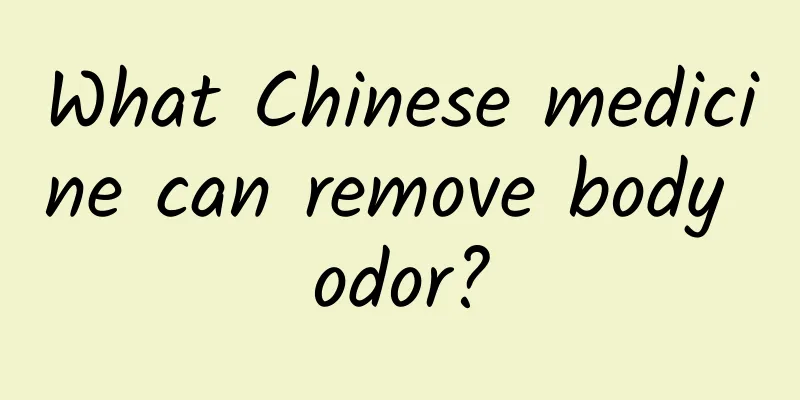How to treat cystitis? Both Chinese and Western medicine can treat it!

|
Cystitis refers to an inflammation of the bladder, which is a common urinary tract infection. Bacterial infection is the main factor that causes cystitis. As for how to treat cystitis, there are differences between traditional Chinese medicine and Western medicine. You can choose a treatment method that suits you. 1. Auricular acupuncture In acute cystitis, the bladder points appear as dots, patches of redness or papules of dark red and shiny. The urethral acupoints are dot-shaped and red. In chronic cystitis, the bladder points appear white in spots or flakes with red edges or white papules. 2. Auricular acupuncture Tenderness at the bladder and urethra points; in chronic cystitis, flake-like protrusions or cord-like objects may be felt at the bladder points, and sometimes cord-like objects may also be felt at the urethra points. 3. Auricular acupuncture points for treatment include kidney, spleen, bladder, urethra, endocrine, subcortical, and triple energizer. The spleen and kidney points can invigorate the middle burner and replenish kidney qi. The bladder point can help separate the clear from the turbid. At the same time, combining it with endocrine and subcortical acupoints can help the recovery of cystitis. The urethral point can play a role in diuresis and relieving stranguria. The Sanjiao point can regulate the three burners and eliminate dampness and heat. 4. Western medicine treatment of cystitis First of all, you need to rest in bed, drink plenty of water, avoid irritating foods, and hot water sitz baths can improve blood circulation in the perineum and relieve symptoms. Alkaline drugs such as sodium bicarbonate or potassium citrate can reduce urine acidity and relieve bladder spasms. Flavonoids (Urinary Ling) can relieve spasms and reduce urinary tract irritation symptoms. 5. Anti-infective drug treatment Select effective antibacterial drugs based on the results of urine bacteria culture and drug sensitivity tests. Before the results of bacterial culture are obtained, rapid treatment is required in acute infection. Therefore, a urine smear can be taken for Gram staining. An initial treatment plan can be formulated based on whether it is bacilli or cocci, or broad-spectrum antibiotics or antibiotics with high urine excretion concentrations and few side effects, such as sulfonamides and furans, can be used. The treatment plan can be adjusted after the results of bacterial culture and drug sensitivity tests are available. The dosage of the treatment medication should be sufficient and the duration should be long. It is usually used until the symptoms subside and the urine routine returns to normal, and then continued for 1 to 2 weeks. During the treatment process, urine bacteria culture and drug sensitivity tests should be carried out frequently, and antibacterial drugs that are sensitive to bacteria should be adjusted at any time in order to achieve complete cure in advance and prevent recurrence. |
<<: The difference between prickly heat and eczema, pay attention to the cause and morphology
>>: The best way to get rid of scars, try these methods
Recommend
Why do people with hypothyroidism suffer from fear of cold and memory loss?
Memory loss, fear of cold, fatigue, and lack of e...
What to do if you have pharyngitis and a sore throat
Patients with pharyngitis are prone to symptoms s...
How to eliminate the redness and swelling of the nose
The tip of the nose is a relatively sensitive are...
Can patting your armpits really detoxify?
Can patting the armpits really detoxify? Many peo...
The reasons for thin endometrium are often related to these three points
The thickness of the endometrium is actually rela...
Why do I have breast pain before my period?
Female friends may experience breast pain and bac...
Gallnut and Angelica dahurica for premature ejaculation
Premature ejaculation is a very common condition ...
What are the dangers of taking too much anesthesia?
If too much anesthetic is injected, the impact on...
What are the symptoms of vitreous opacities?
Vitreous opacity is an eye disease. Common sympto...
What are the reasons for continuous menstruation?
Normal women usually have menstruation between th...
What medicine is used for vaginal yeast infection
Vulvar fungal infection is mainly caused by inade...
Can CT scan detect cerebral infarction?
There are many diseases in our human body. When w...
Why does fetal movement stimulate the urethra?
Even if you are not pregnant, we should have hear...
What are the effects and functions of safflower?
The efficacy and function of safflower can be ref...
What can girls drink to relieve dysmenorrhea?
Menstruation is a physiological phenomenon that h...









